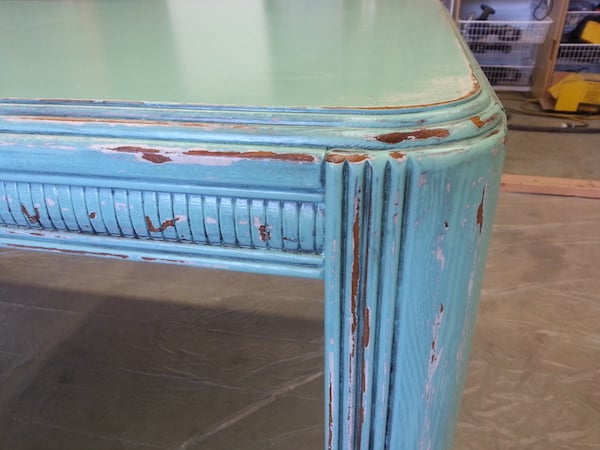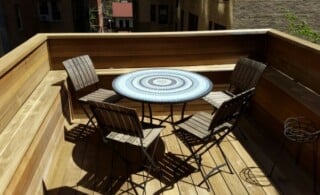
Many homeowners are familiar with the scenario of having wood furniture that would be beautiful if not for the countless scratches, dents, and dings in the finish. Similarly, classic wood furniture that has lost a bit of its original charm due to poorly applied paint or stain may also spend its time in storage rather than on display in your home. Thankfully, furniture refinishing can make old, scarred furniture look new or different. It can involve removing paint and exposing the grain of the wood, changing the color of the furniture to be lighter or darker, altering the hue of the finish to make one piece match another, and/or simply finishing raw, untreated wood.
The term furniture refinishing also applies to painting furniture and applying “faux” finishes, which is the use of special paint, glazes, and techniques to make furniture look like a totally different material such as marble, crackled paint, etc.
Traditional Furniture Refinishing
Refinishing furniture generally starts with performing any necessary repairs, such as re-gluing loose parts or peeling veneer, replacing broken or cracked pieces, etc. Then the piece is stripped of old paint, stain, varnish and/or other finishes. It may be bleached to lighten the wood or remove stains, after which the furniture is carefully sanded, often several times. Then stain, if desired, is applied, before it is finished with varnish or some other protective finish.
Refinishing Furniture vs. Furniture Refurbishing
Often furniture does not need to be completely stripped and refinished, and will benefit from less aggressive care called “refurbishing.” The first step is to thoroughly clean it to remove built-up dirt and wax. If most of the original finish is still intact, it may just need a little light sanding and touch-up staining to match the original finish, with a final coat of varnish or other protective finish. This is far less time consuming and costly than complete refinishing. Furniture refurbishing is frequently advised for antiques, because usually the less done the better.
Ready to start your furniture refinishing?
Find ProsAntique Furniture Refinishing
Refinishing antique furniture can restore its beauty, but it can be difficult for many people to tell how much restoration is too much. Obviously, pieces that you plan to keep for yourself can be refinished, refurbished, or whatever you like to whatever degree you desire. For collectors and antique dealers, however, there is such a thing as too much restoration. Incredible things can be done with pieces that you might think can’t be salvaged, but in some cases, leaving an antique in its current condition may be your best course of action. It is a good idea to have a professional appraiser take a look at any piece of antique furniture you’re planning on selling for a profit.
Furniture refinishing, repair, and reupholstering all require experience and skill. However, they are not always the most economical way to replace old or broken furniture. Because wood is a natural product, and it may not always be possible to know how furniture has been treated in the past, results may not turn out exactly as a consumer hopes. A reputable professional can help consumers decide if a piece of furniture warrants the investment of professional refinishing.
 Building a Mosaic Table
Building a Mosaic Table  Dining Room Sets
Dining Room Sets  The Home Aquarium: Sleep with the Fishes
The Home Aquarium: Sleep with the Fishes  Speaking the Language of Home Accents
Speaking the Language of Home Accents  The Price of Formal Furniture: Dining Room Chairs and Buffets
The Price of Formal Furniture: Dining Room Chairs and Buffets 

The item is a dresser; and it is at least somewhere between 30 and 40 years old. Oak furniture was the in thing in those days and I had to have oak furniture. It is not expensive but I am trying to sell it along the with the other 4 pieces. I do not know what happened to the area in question… I was going to dust the area and the entire area that had been polished lifted up and off of that one section of the furniture. Would like an estimate on the cost. Thank you